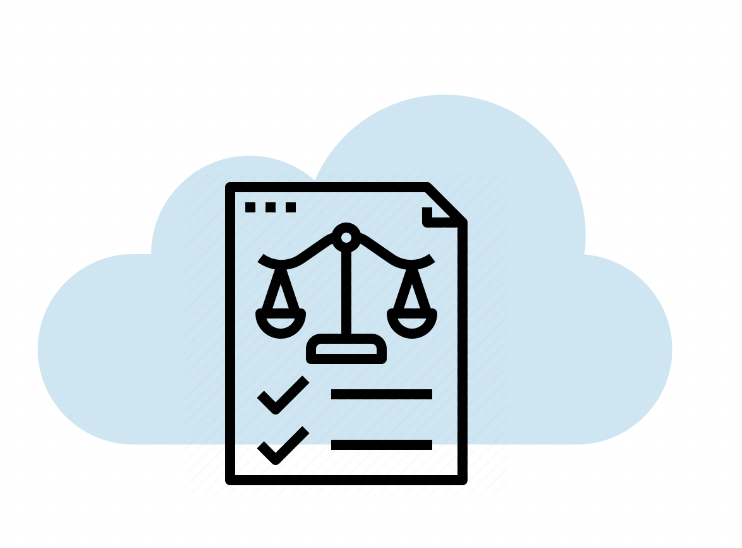It is evident that adoption of Cloud-enabled solutions has been growing fast in recent years. Though companies increasingly started adopting cloud-enabled solutions more than a decade ago, the pandemic imposed remote-working conditions and employees’ preference to continue working from home has forced companies to accelerate their cloud adoption plans. Also, going cloud is now an important and indispensable step towards digital transformation.
At coMakeIT, we’re approached by our customers for various kinds of cloud transformation services. Almost always Cloud transformation helps in realizing our customer’s digital transformation goals. It is a part of both the greenfield products (the ones built from scratch) we develop and the projects involving the modernization of legacy products. Still, our approach to cloud transformation differs starkly as per the unique conditions of each business.
As more and more businesses started adopting cloud solutions, the providers too expanded their features and service offerings. We are now spoilt for choice. Yet, many companies don’t utilize their cloud infrastructure’s complete potential severely diminishing ROI. It is hence necessary to define cloud transformation strategy and purpose clearly. The strategy is decided after carefully comparing available options and choosing the one most appropriate for the business and its goals. Also, please note that the most affordable option needn’t be the best option for you.
When a customer approaches us, probing answers together to some questions will help in arriving at the most suitable cloud strategy.
How to assess whether you are ready for the cloud? Which cloud model is better: public, private, or hybrid? What about vendor lock-in? Should you choose a low-cost provider? Should you make all your applications cloud-native? How to manage Cloud complexity?
Here are some perspectives to help you answer these questions.

1. Align your digital transformation and business goals
Cloud is an important part of digital transformation. It is hence necessary to make the choice that aids in your business vision. The cloud strategy, like a digital transformation plan, should help you reach a wide number of customers and in meeting changing customer preferences.
Cloud transformation may seem more technical; however, it is important to align it with business goals. It gives you another reason to percolate your business goals to every team, especially the teams working on cloud implementation.

2. Decoupling application architecture and choosing the right cloud partner
Most application makers these days consider using multi-cloud vendors. However, the trend should not be followed as a hard rule. Each Cloud infrastructure has a different footprint. And some cloud transformations may require elaborate and expensive tech changes. Consider the efforts, expenditure, and returns while choosing a cloud provider.
For some businesses with a scope of heavily expanding their consumer base to diverse geographies, making the applications cloud-agnostic pays well and makes the businesses and the applications considerably future-proof.
A good way to make applications compatible with most cloud providers is by transforming your applications into cloud-native ones using technologies like Terraform. It prevents cloud vendor lock-in and gives you greater freedom to choose multi-cloud services.

3. Understand your customer base
Cloud infrastructure aids in expanding your business to new geographies.
However, it is important to understand where many of your customers are situated and where you would like to station your server. It helps in increasing your application speed and managing peak loads.
For example, Netflix’s users span across the globe, yet their main market is the US. Their Content Delivery Network broadly uses network core as well as edge data centers in several cities across the world that cache content closer to viewers.

4. Automation and scaling of business and infrastructure
Cloud infrastructure provides you the convenience of scaling your applications up or down as a response to the estimated demand. Though managing loads is easier with cloud infrastructure and solutions, it is still necessary to estimate peak loads and their distribution. Imagine how much it will annoy Amazon’s customers if the site crashes during a heavily advertised sale.
It is also beneficial to have a clear idea of how you would like to extend the application. Without this vision, it is almost impossible to choose a cloud partner according to your business needs and goals.

5. Regulatory compliance
Your server location is not only determined by your business goals and customer base. Laws and regulations of the country your server resides in apply to your business. Regulatory compliance if not considered seriously may turn costly and sometimes even fatal. Though your customers may be situated all over the world, your server has to be located in the country whose laws your business has to comply with.
Managing Cloud Complexity
Cloud-enabled infrastructure is an essential component of almost every business’s future strategy and growth. Infrastructure and applications are increasingly shifting from on-premises to the cloud. With multi-cloud environments, vendor lock-ins, and changing cloud preferences, it is also getting increasingly difficult to manage complexity in cloud applications and control cloud costs.
To manage cloud solutions effectively, cloud architects, developers, the sourcing team, and importantly, the business leaders should work in collaboration. The terms like multi-cloud, cloud-native, are so overused that not everyone working on it understands it the same way. This leads to not only complexities in code and technologies, but also arguments over who is responsible for what. Seamless and clear communication is essential to make cloud transformation work.
The most effective way to manage complex cloud systems in large organizations is by leveraging real-time data to gather a better view of cloud services, and their impact on applications and infrastructure. Such advanced data-analytics systems can also incorporate the latest advancements in Artificial Intelligence and machine learning to manage the complexity effectively.
Several ERP, CRM, Agile Dashboards generally combine with Cloud technologies to provide a comfortable experience to users and customers. Collaborations and discussions usually aid in successfully implementing Cloud Infrastructure and services. Such strategies demand an external and objective eye, for the natural direction of any business view is normally outwards. You need not forcefully turn it inwards, but rather ask a trustable partner.
Our clients who choose us for proving Cloud Transformation services usually start with a brainstorming session to understand the business ecosystem, its needs, the company’s goals. Together, we probe answers to several questions before actually embarking on implementing cloud solutions. We have listed some of the ones we find pertinent here. Would you like to add further? To discuss your business’ Cloud Transformation plans, please visit – Cloud Solutions




